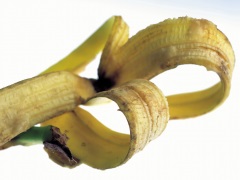Features
Not letting biogas go to waste
Date: 2019-05-28 10:00:10.0
Author: Jon Evans

Perhaps the easiest way to derive energy from organic material is via biogas, which is naturally generated by anaerobic bacteria as they break down the material. It is a purely natural process that doesn’t require any extra energy or materials. But biogas production is not without its problems.
For a start, biogas comprises around 60% methane and 40% carbon dioxide. If the biogas is just burnt for power, it releases carbon dioxide into the atmosphere, which tends to ruin the environmental benefits of generating biogas in the first place. If it’s specifically the methane that’s of interest, because it’s going to be added to the natural gas supply, then it needs to be separated from the carbon dioxide. Although there are several industrial-scale techniques for doing this, such as chemical scrubbing or membrane separation, they all require energy and still leave the problem of what to do with the remaining carbon dioxide.
Furthermore, after biogas is produced from organic waste, it leaves behind a nutrient-rich and potentially polluting slurry that needs to be dealt with. At the moment, this is creating a bottleneck that is holding back the development of the biogas industry. In a couple of recent journal papers, however, scientists have suggested ways to overcome both these problems.
In a paper in ChemSusChem, a team of Danish scientists led by Sebastian Villadsen at the Technical University of Denmark has suggested that the carbon dioxide problem could actually help to solve the problem of storing renewable energy. The scientists propose using renewable energy such as solar and wind to split water, and then react the released hydrogen with the carbon dioxide from biogas to create additional methane and other useful fuels and chemicals.
The technology for doing this isn’t commercially available yet, but it is actively being developed (see Reduced to clear). The scientists propose that this process could be particularly useful for producing carbon-neutral fuels for transport industries such as aviation that can’t easily be electrified and so are going to continue requiring liquid fuels for the foreseeable future.
Although the amount of biogas slurry being produced is beginning to create a bottleneck, the slurry is actually a potentially useful resource, as it contains lots of water and nutrients. The trick is finding uses that can accept large amounts of slurry as it is, rather than requiring it to be cleaned up or have specific nutrients extracted. One potential use of this kind is in the production of cellulosic ethanol, with the slurry acting as a source of water and nutrients for the fermenting microbes.
At the moment, supplying water and nutrients such as nitrogen and phosphates adds a great deal to the cost of producing cellulosic ethanol; biogas slurry should offer a much less expensive source. Unfortunately, biogas slurry also contains lots of less useful compounds, such as acetic acid, and tends to be fairly acidic, both of which reduce the activity of fermenting microbes and ruin the efficiency of the whole process.
To overcome this problem, Mingxiong He and his colleagues at the Biomass Energy Technology Research Centre in Chengdu, China, decided to try developing a microbial strain that is better able to thrive in biogas slurry. For their microbe, they chose a bacterium called Zymomonas mobilis, which is naturally hardier than yeast and, under certain conditions, can actually produce more ethanol.
Because they didn’t know exactly what traits the microbe would need in order to thrive in the slurry, the scientists eschewed genetic engineering for adaptive laboratory evolution. This involved conducted various rounds of mutation by exposing the bacteria to a plasma and then choosing the best-performing strains in each round.
As the scientists report in a paper in Biotechnology for Biofuels, this eventually resulted in two strains that could grow well in the slurry, and that could ferment glucose added to the slurry into ethanol at a rate of 0.63g/L/h. This is 62% higher than the unmodified microbe and far higher than had been achieved before. So, by the simple expedient of letting organic matter degrade anaerobially, we might soon be able to obtain lots of methane and whole range of liquid fuels.
The views represented here are solely those of the author and do not necessarily represent those of John Wiley and Sons, Ltd. or of the SCI.
This article has not been tagged with keywords.
